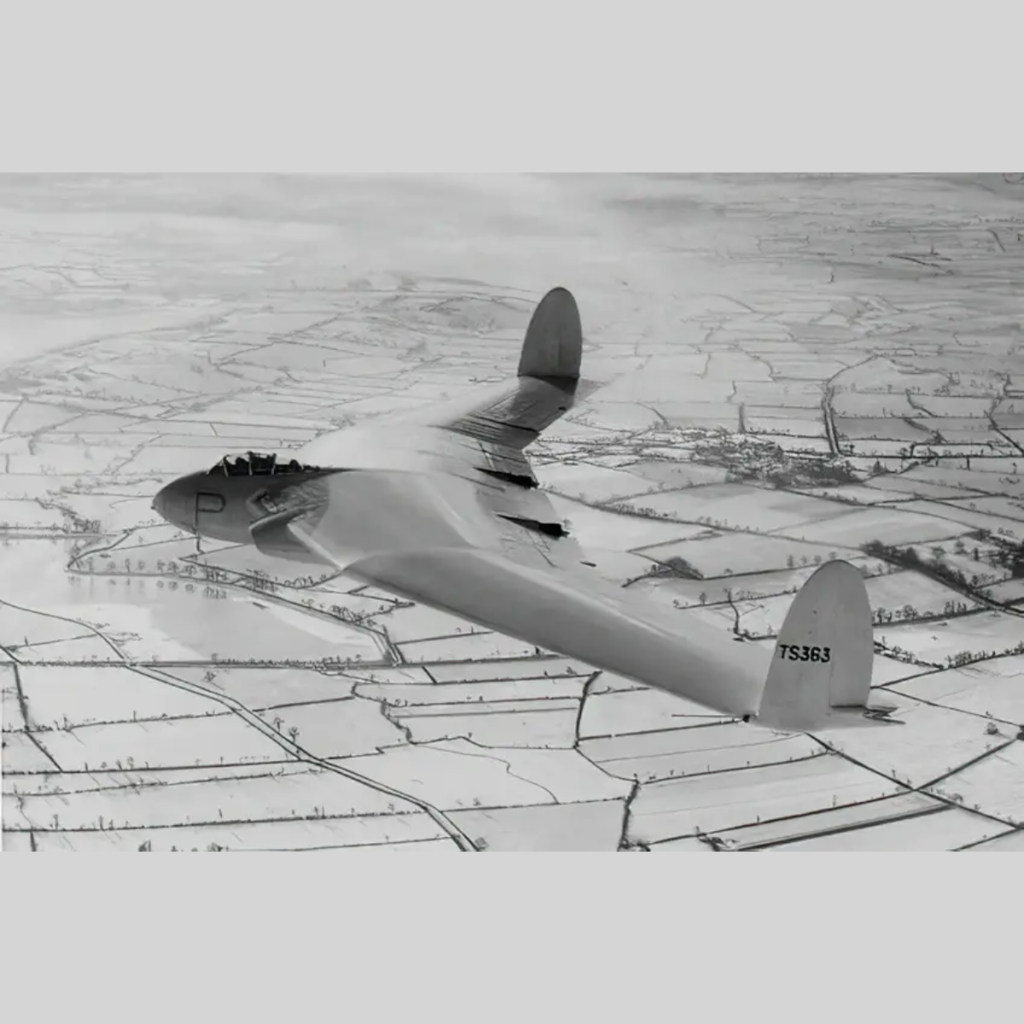
The Dawn of the Flying Wing Concept
In the late 1940s, the Armstrong Whitworth AW 52 emerged as Britain’s ambitious foray into a new realm of aviation: the flying wing aircraft. This wasn’t the first exploration into such a design. Earlier, German innovator Hugo Junkers had patented a wing-only transport concept in 1910. The Horton brothers in Germany and other designers in the Soviet Union and the United States also explored similar concepts, with the Americans ultimately developing the Northrop B2 Spirit stealth bomber decades later.
The Second World War accelerated aviation research, particularly with the advancement of the jet engine. By 1943, the future of long-range commercial air travel was envisioned with jet-powered crafts. Armstrong Whitworth, seizing this trend, proposed a large flying wing airliner, powered by four to six jet engines, with passenger seating integrated into the wing.

The Path to Innovation
A smaller, safer test was necessary before the full-scale airliner could take to the skies. Enter the AW 52G, a wooden glider half the size of the proposed AW 52 prototype. The glider’s design, while primitive compared to its jet-powered successors, played a crucial role in testing flying and load-handling characteristics. It was equipped with an innovative, automated pitch management system, addressing the critical challenge of trim changes in flying wings. The successful glider trials led to the commissioning of two AW 52 jet-powered prototypes.
Imagine the commercial aviation scene in the 1950s with an aircraft matching the capacities of modern Boeing 737s or Airbus A320s. The AW 52 was poised to be this game-changer. With a maximum takeoff weight of around ninety thousand kilograms, the AW 52 was not just a technological marvel but a potential commercial titan.

The Jet-Powered Prototypes
The two jet-powered AW 52 prototypes shared aerodynamic features with the glider but were designed for high-speed operations. These all-metal turbojet crafts, with a 90-foot wingspan and a 20,000-pound takeoff weight, were initially meant for research. However, their generous cargo capacity hinted at possible practical uses, like mail transport.
Both prototypes featured a 35-degree swept wing with small end-plate fins and rudders, elevons for roll and pitch control, and a sophisticated system for maintaining laminar flow over the wings. The meticulous construction process prioritized extreme surface flatness to ensure aerodynamic efficiency.
Triumph and Tribulations in Testing
The first AW 52 prototype took flight in 1947, showcasing Armstrong Whitworth’s engineering prowess. The aircraft received favorable responses from the government and the press, with its handling instilling confidence even in its earliest flights. However, challenges soon emerged. The flying wing’s flutter speed was lower than expected, limiting its top speed significantly. These issues, coupled with laminar flow maintenance problems, led to a catastrophic incident in 1949, where test pilot Joe Lancaster had to eject due to severe wing flutter.
This prototype played a crucial role in advancing aircraft design and testing techniques, and its trials contributed valuable insights into the challenges of flying wing aircraft. Armstrong Whitworth shifted focus to more traditional designs, but the AW 52 is a testament to British aviation history’s boldness and innovation.
